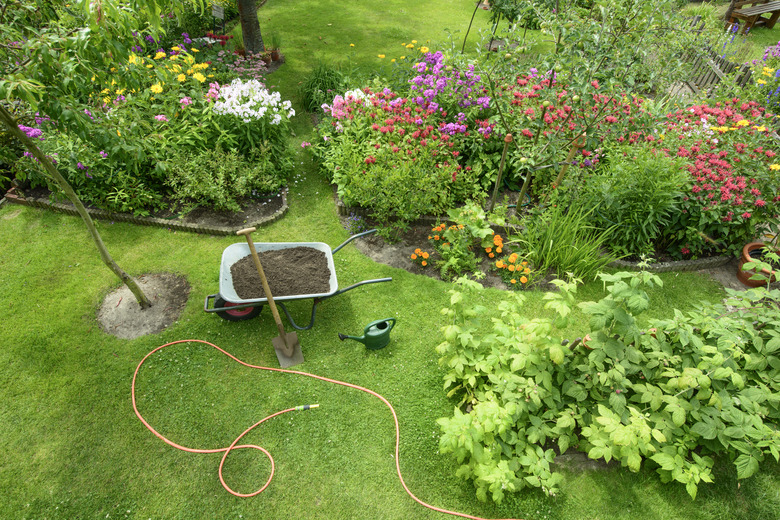When Should I Apply Weed And Feed To St. Augustine Grass?
We may receive a commission on purchases made from links.
St. Augustine grass (Stenotaphrum secundatum, USDA zones 8-10) is a warm-season grass, which grows well in the Deep South, where summers are hot and the sun is relentless. Floratam grass is a type of St. Augustine that's less cold hardy than other types and less tolerant of shady growing conditions. Palmetto is more tolerant of cold and produces a brilliant, blue-green lawn. Weed-and-feed compounds contain both a fertilizer and an herbicide. Weed-and-feed fertilizers can be tricky to apply to all St. Augustine grass varieties because many of the herbicides that kill weeds also kill St. Augustine grass.
Tip
The best time to use weed-and-feed products on St. Augustine grass is spring through summer while it's actively growing.
Weed-and-Feed Features
Weed-and-Feed Features
Granular weed-and-feed preparations usually consist of fertilizer granules impregnated with an herbicide. Ready-to-use liquid weed-and-feed preparations contain a mixture of fertilizer and herbicide. Weed-and-feed products that attach to a garden hose usually contain a concentrated liquid mixture of fertilizer and herbicide that blends with the water coming through your hose. Apply weed-and-feed mixtures only in the early spring and early summer.
Weed-and-Feed Benefits
Weed-and-Feed Benefits
Most homeowners buy weed-and-feed preparations for the sake of convenience. In a single application, the compounds nurture the grass with vital nutrients to make it grow thick and green, and poison the weeds to make them wither and die. Although weed-and-feed compounds are often more expensive than fertilizer alone, the convenience may be worth the price to a busy homeowner.
Drawbacks of Use
Drawbacks of Use
Often, weed control and fertilizer need to be applied at different times. Weed-and-feed preparations may not be completely effective if the weeds they control have not yet germinated, unless the herbicide is a pre-emergent formula. Apply pre-emergents from February to March to prevent summer weeds from germinating. Some weed-and-feed compounds contain 2,4-D, an herbicide that can kill St. Augustine grass.
Because St. Augustine grass is sensitive to freezing temperatures, you should not use weed-and-feed compounds too late in the year. Additionally, regular fertilization promotes optimum growth and natural weed control. Keeping St. Augustine grass properly maintained through regular water applications and regularly mowing also goes a long way in reducing unwanted weed growth. The grass needs 1 lb. of nitrogen per 1,000 square feet monthly from May to August, when St. Augustine grass is actively growing. Weed-and-feed can be used at the same time you regularly fertilize.
Safe Herbicides for St. Augustine
Safe Herbicides for St. Augustine
Weed-and-feed compounds containing the herbicide Atrazine are safe to use on St. Augustine grass. Atrazine works on pre-emergent weeds, which means the herbicide prevents weed seedlings from growing. Post-emergent herbicides kill weeds that have already sprung up in the lawn. Weed-and-feed preparations containing asulam kill post-emergent weeds.
Always read the product label to be sure the weed-and-feed compound is safe to use on St. Augustine grass, which may be damaged by some products. The label also provides valuable information on how much material to apply using various application methods, chemical analysis so you will know what nutrients your lawn will receive and a list of weed types the herbicide in the fertilizer will control.
